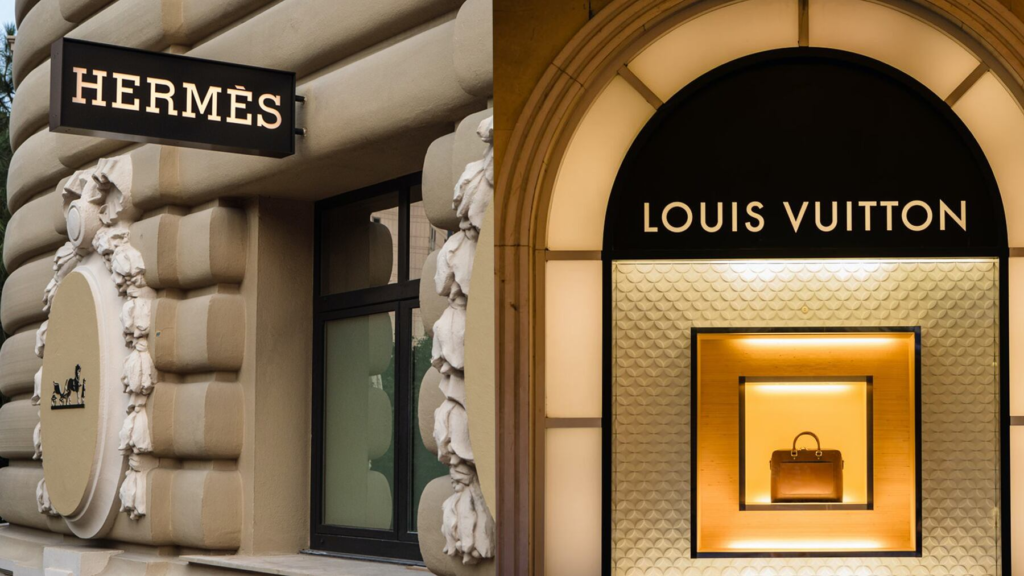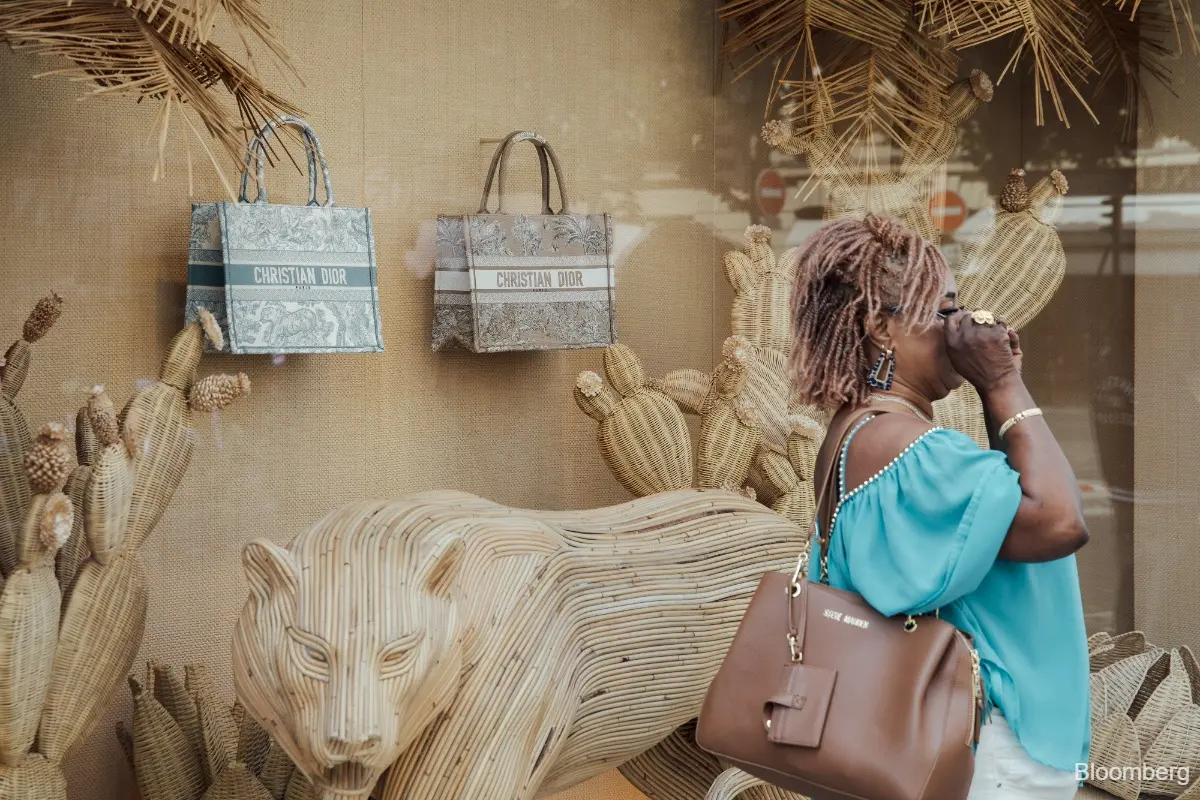Luxury stocks are no longer moving together. In 2025, investors are witnessing a sharp divide between the top-performing luxury companies and the ones falling behind. This growing gap has turned the sector into a battlefield of winners and losers, pushing analysts to take a deeper look into what’s fuelling the change.
From fashion giants like LVMH to watchmakers such as Richemont and automakers like Ferrari, the luxury market once seemed immune to broader economic slowdowns. But now, the widening performance gulf is prompting fresh questions about future growth, customer loyalty, and investor trust in luxury stocks.
Why Is the Luxury Sector Splitting?
The luxury stocks divide is driven by several new market pressures. Demand from Chinese consumers once a major growth engine has weakened. Meanwhile, inflation and changing consumer habits are reshaping where wealthy buyers are spending their money.
Investors are now focusing on brands that show adaptability, digital transformation, and strong U.S. or European market support. Others that fail to innovate or shift geographically are seeing falling revenues and slower stock performance.

Strong Dollar, Weak Demand
A major factor hurting some luxury stocks is the strong U.S. dollar. Global luxury brands often report in euros or Swiss francs. When the dollar strengthens, their goods become more expensive in key markets like the U.S. or Asia. This discourages international buyers and cuts into revenue.
Additionally, China once the golden goose for luxury has faced economic headwinds in 2024 and 2025. Youth unemployment, declining property values, and cautious spending habits are now the norm. This change has severely affected brands with heavy exposure to the Chinese market.
Winners: Brands Still Winning in 2025
Despite economic pressure, several companies have managed to keep growing and rewarding investors. These brands typically have strong pricing power, wide global presence, and loyal customer bases. Here are the top gainers:
LVMH: The Undisputed Leader
Moët Hennessy Louis Vuitton (LVMH) remains a luxury heavyweight. With strong performance across fashion, jewelry, and spirits, LVMH continues to appeal to wealthy consumers globally. The group’s investments in digital experience and exclusive collaborations keep it one step ahead.
Even though Chinese demand has slowed, LVMH is balancing its strategy with strong U.S. and European markets. Its 2025 Q2 report showed an 11% revenue increase, mainly from Louis Vuitton and Dior’s performance in North America.
Hermès: Quiet Strength
Hermès is another standout in luxury stocks. Known for its timeless pieces and controlled distribution, Hermès keeps its exclusivity intact, making its products even more desirable. Their strategy avoids overexposure, which protects them from global fluctuations.
Their stock has risen steadily, showing a 15% year-on-year growth thanks to loyal clients and steady pricing power.
Ferrari: Speed and Stability
The luxury carmaker Ferrari has proved that prestige sells even in uncertain times. Its limited-production models, global fan base, and hybrid roll outs make it a top performer in the luxury stocks sector.
Ferrari’s 2025 performance beat analyst expectations, with growing demand in the U.S. and Middle East, regions less affected by China’s slowdown.
Losers: Brands Struggling to Keep Pace
On the other end, not all companies in the luxury space are thriving. A mix of poor marketing strategies, over-dependence on Asia, and slow digital growth has weighed down these stocks:
Burberry: Losing Its Shine
Once a symbol of British luxury, Burberry is facing tough times. The brand has been slow to modernize and hasn’t managed to spark enough interest among younger consumers. With 40% of its revenue once dependent on China, the recent economic slowdown has hit Burberry hard.
Its 2025 earnings dropped 8% compared to the previous year, and analysts are sceptical about its ability to bounce back without a major brand overhaul.
Kering: The Gucci Problem
Kering, the parent company of Gucci, has also seen its luxury stocks under perform. While Gucci was once one of the trendiest brands, its current product lines haven’t resonated well with the new generation.
Kering’s stock has dropped nearly 20% in the past 12 months. Experts point out that the brand lacks a clear creative direction and over-relies on promotions that hurt its premium image.
The Middle Zone: Who’s at Risk?
Between winners and losers lies a group of companies that could swing either way depending on their next moves. These include:
- Richemont, the Swiss watchmaker, which has maintained decent growth but risks falling behind if it doesn’t further digitize.
- Moncler, known for luxury outerwear, which continues to perform but is heavily dependent on weather conditions and fashion cycles.
- Prada, which has tried to revive its image but hasn’t broken into the high-growth category yet.
These companies are now in a risky position, needing to reinvent or innovate fast to avoid sliding into the under performing bracket.

What This Means for Investors
The widening performance gap among luxury stocks shows that the sector is no longer a safe haven for all players. Investors now need to dig deeper into each company’s financials, leadership strategy, market diversity, and adaptability.
Here are some key investor takeaways:
- Geographic diversity is key: Brands too focused on China or a single region are at higher risk.
- Digital transformation matters: Those embracing e-commerce and digital experiences are growing faster.
- Brand strength and pricing power rule: Companies with loyal followers and timeless products remain safe bets.
- Innovation wins: Fresh collections, celebrity partnerships, and creative direction keep brands relevant.
The Role of Sustainability
In 2025, sustainability is no longer optional for luxury. Younger consumers, especially in Europe and North America, are leaning towards brands with ethical practices and transparency.
Companies like Hermès and LVMH are investing in Eco-friendly production, reducing carbon emissions, and increasing resale opportunities. These steps not only win customer trust but also boost their stock performance by attracting ethical investors.
On the other hand, brands that continue to ignore climate impact and ethical labour practices risk losing a significant portion of their market share.
Outlook for 2026 and Beyond
The luxury stocks market will continue evolving in the next 12–18 months. Analysts expect:
- More consolidation as smaller brands may be acquired by larger groups.
- Stronger digital presence, including use of AI, virtual stores, and AR experiences.
- Personalised marketing to connect with high-value clients directly.
- Expansion in Gulf countries, especially Saudi Arabia and the UAE, where luxury demand is rising.
The key to success will be adapting to new buyer behaviour, diversifying market exposure, and creating a seamless brand experience across all channels.
Final Thoughts: Strategy Over Sentiment
Luxury has always been about image, emotion, and exclusivity. But in 2025, it’s also about strategy. The days when all luxury stocks moved together are over. Investors and consumers alike now differentiate based on quality, adaptability, and ethical values.
The market gap is growing, and only the boldest, smartest, and most visionary brands will survive and thrive.
Do follow Gulf Magazine on Instagram
Also Read – Iran US Navy Confrontation: 5 Shocking Risks in Gulf Tension



